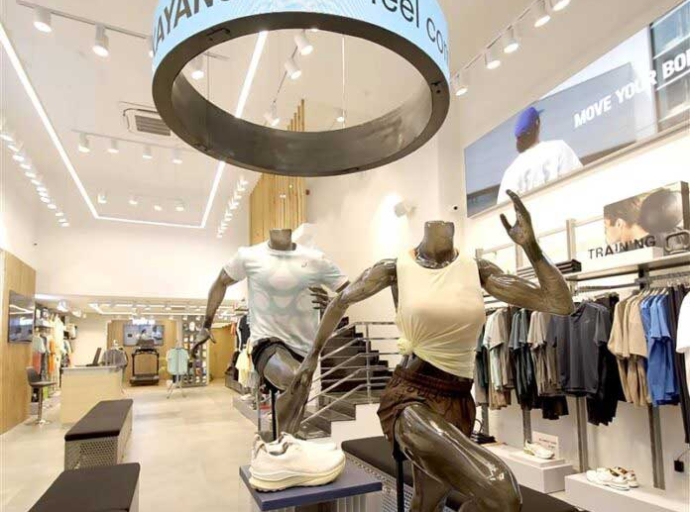07 November 2022, Mumbai:
The word "stylish" is often associated with waste in modern fashion. On the surface, fast fashion extravagance, couture knockoffs, and fresh weekly fashion trends may appear just to hurt the wallets of those who participate in the culture. But there are severe problems with rapid fashion.
The rules to be announced by the European Commission in recent months are designed to bring in longer-lasting products that can be used multiple times rather than worn a few times and then thrown away. The noble intent of the EU is to crack down on fast fashion through proposals to make the clothing made and worn there more durable, reusable, repairable, and recyclable.
Alarmist prognosis
Impending disaster; Shocking enough fashion industry has a dubious distinction as assessed by global experts that estimated unhealthy greenhouse gas (GHGs) emissions/yield of this space globally to dangerously only to rise in excess of some 50% come 2030 and, again comes in line is textile production processes & production currently facing heat from the environmentalists and sustainability warriors alike construed to be one of the heaviest polluting industries across the world economy, projected to emit as much as 1.2 billion tonnes of (GHGs) greenhouse gases.
The fact that these clothing items originate from somewhere is the first and most apparent issue with fast fashion. These clothing products are created by manufacturers using inexpensive, inferior materials. In this manner, even after accounting for all overhead expenses, their brands may continue to sell the items for low rates.
The elephant in the room remains consumerism, fast fashion, and the existing lifestyle adopted by the generation of the day.
Decoding slow-fashion
The goal of this campaign is to get individuals to take their time choosing clothes. Slow in conception, creation, acquisition, use, and disposal. Slow fashion is all about wearing clothing in ways that are consistent with eco-ethical principles and objectives.
It's about approaching what you wear with a clear vision of sustainability to set foot.
These are the problems that the slow fashion movement aims to solve. The underlying core principle of the slow/sustainable fashion revolutionary process is to take the leg off the accelerator cutting/slowing down the manufacturing process and bringing down ultimately overall consumption of apparel/garments worldwide.
More affordable clothing options than ever before have been coming off the assembly lines during the last ten years.
Sustainable Materials and Technologies
Misguided and misplaced environmental priorities are only making plans to fail for the world's climate change. Yes, petrochemicals, the chemical byproducts obtained from petroleum processing, account for 63% of our textile fibers. This contains several different derivatives of polyester, acrylic, lycra or spandex, and elastane.
Then, manufacturers construct apparel/clothing to satisfy our shopping habits using cotton, one of the materials with the highest worldwide water use/water thirst, to meet 37% of that textile demand.
One of the biggest causes of pollution is petroleum, the main ingredient in synthetic products. Mining petroleum to supply a booming fashion industry is futile in a society striving to move away from using fossil fuels to provide energy.
Additionally, the manufacture of textiles increases the release of greenhouse gases like CO2. More CO2 was released into the environment in 2015 due to textile manufacture than from foreign aircraft and maritime shipping. Increased levels of climate change and global warming are indicators of the effects.
Is sustainable fashion a rich man's obsession/Sustainable yet fashionable; Manufacturers will have to ensure their clothes are eco-friendly and hard-wearing? There is a compelling need to make textile and apparel (T&C) manufacturing more resource-conscious; making it more responsible by using sustainable materials and processes, energy-efficient, and cutting mindless costs through the application of disruptive emerging technologies.
The dark side of Textiles
According to a survey by well-known slow fashion activist Kate Fletcher, several firms pay their employees poverty wages with no overtime compensation. Typically, these individuals are employed temporarily with no benefits. Aside from other problems, unthinking clothing consumption with an opaque supply chain might conceal child labor and unfair treatment.
Fast fashion moves fast, so clothing fads come and go with astounding speed. The biggest challenge the world's climate facing today is," The textile industry is the second greatest polluter of local freshwater in the world and is culpable for roughly one-fifth of all industrial water pollution".
Post-consumer waste
According to a Barclaycard poll, 1 in 10 British consumers purchase clothing solely for social media photos and never really wear them. They either send these garments back to the retailer or tuck them away at the back of their wardrobes. Whatever the case, these garments inevitably end up in the trash.
Consumption & Waste pathway; Only 1% of these garments will ultimately be recycled. To meet the demand for secondhand clothing worldwide, waste firms will dispose of the remaining items in landfills, the oceans, or by selling them to foreign nations.
Due to the oversupply of clothing at these outlets brought on by the expanding fast fashion industry, even some of the clothing donated to thrift shops may eventually meet this end.
Silver lining
Very recently PM, Narendra Modi urged the nation,” The compelling need of the day is to make sustainable clothing a conscious choice today if not yesterday”.
The tenet of equitable gain; What is certainly expected out of global netizens is making conscientious choices about their future by doing their goodish bit of questioning the status quo about what we buy and consume day to day level, and the resultant effect on our mother planet in an unquestionably resource-starved world.
What is impressive is, the chatter around sustainable clothing in public discourse/social media noise around it in conscious western nations and also rising clamour in India too at least among conscious/informed millennials, gen z, more than a fad and conjecturing as an elite concern, beyond a handful of forward-looking designers/designer labels, iconic brands, ethical and sustainable brands and hopefully it should even out.
Latest Publications


































